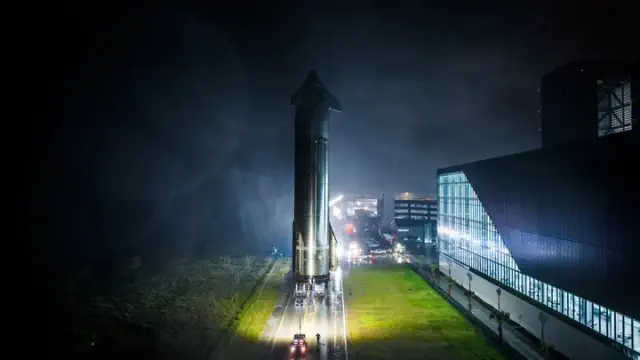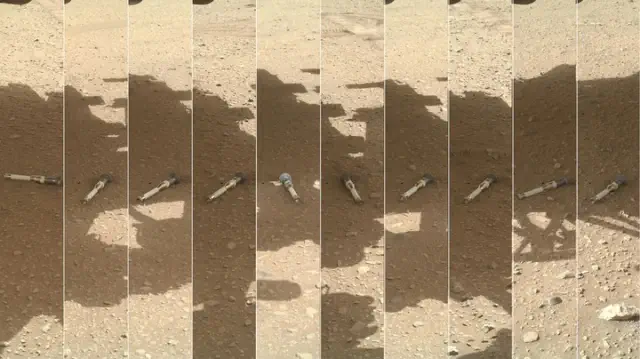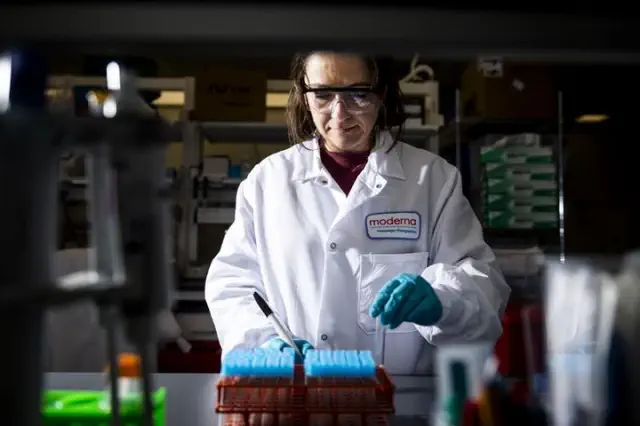
SpaceX teams gear up for the seventh launch of the Starship mega rocket.
You have received training on data that is current up until October 2023. View pictures in App save up to 80% data. SpaceX teams get ready for the seventh launch of the Starship mega rocket. SpaceX teams are gearing up for the seventh test launch of their Starship mega rocket. The largest rocket in the world may take off once more from SpaceX’s Starbase in Texas at 5 p.m. this coming Monday. SpaceX announced that Starship 7 represents a "next-generation" spacecraft designed to evaluate major enhancements. Among the upgrades are the initial payload deployment trial, various reentry experiments focused on capturing and reusing ships, as well as the launch and recovery of the Super Heavy booster. SpaceX intends to launch a batch of Starlink satellites from orbit for the first time. Following the launch, SpaceX plans to retrieve the Super Heavy booster at the launch site, while Starship is set to complete a splashdown in the Indian Ocean. SpaceX intends to utilize its Starship and Super Heavy rockets for future missions targeting the Moon and Mars. Given the experimental characteristics of the rocket, there may be a postponement in the launch schedule. to download our free news, weather and smart TV apps. And click here to stream Channel 9 Eyewitness News live.

Mars rock samples might hold clues to extraterrestrial life, but will NASA be able to return them to Earth?
NASA plans to investigate two distinct methods for retrieving Mars rock samples gathered by the Perseverance rover, with the potential that these samples may hold clues to the existence of extraterrestrial life. View pictures in App save up to 80% data. A photomontage showcasing the tubes filled with Martian samples that NASA intends to retrieve and return to Earth. NASA has announced two potential plans for retrieving rocks from Mars that may contain evidence of alien life. Since its launch in 2021, NASA's Perseverance rover has been actively gathering rocks and sediments from a historic lakebed on Mars. Nevertheless, NASA is currently faced with the challenge of figuring out how to return these samples to Earth for further examination. The original Mars Sample Return Program called for collecting the Perseverance samples by 2033, but delays and spiraling costs forced NASA back to the drawing board last year. NASA will now explore two new landing strategies for retrieving the rock samples before deciding on which one to pursue in 2026, according to a statement released on Tuesday (Jan. 7). "Pursuing two potential paths forward will ensure that NASA is able to bring these samples back from Mars with significant cost and schedule saving compared to the previous plan," Bill Nelson, NASA administrator, said in the statement. "These samples have the potential to change the way we understand Mars, our universe, and – ultimately – ourselves." The search for extraterrestrial life on Mars There's no guarantee that life ever existed on Mars, but if it did, then it's possible the Perseverance rover may already have found signs of it in the Jezero crater lakebed. Scientists won't know for sure what's in the samples until they get them back to Earth and study them in a lab. NASA's Mars Sample Return Program was initially supposed to cost $7 billion, but when the mission's estimated price tag climbed to $11 billion — an upper-end estimate calculated by an independent review board — and was set to be delayed until 2040, the agency announced a major program overhaul, Live Science's sister site Space.com reported. In September 2024, NASA approved 11 sample return proposals submitted by researchers and private firms to enhance the program. As part of this recent announcement, NASA will investigate and assess two of these proposals. Two routes ahead The first option relies on a tried and tested landing system design involving a rocket-powered sky crane, which uses cables to lower down the lander. NASA used this method to land the Perseverance rover on Mars in the first place, and it's estimated to cost between $6.6 billion and $7.7 billion. The second option relies on new commercial capabilities from private industry and is estimated to cost between $5.8 billion and $7.1 billion. NASA didn't discuss the commercial option in detail because of concerns about proprietary technologies and designs, Space.com reported. Regardless of which method NASA chooses, the landing system will use a smaller, modified version of the Mars Ascent Vehicle to carry the rock samples into orbit. The European Space Agency’s Earth Return Orbiter — a planned spacecraft that will launch no sooner than 2027 — will then collect and transport the samples back to Earth. "Mars Sample Return will allow scientists to understand the planet's geological history and the evolution of climate on this barren planet where life may have existed in the past and shed light on the early solar system before life began here on Earth," Nicola Fox, associate administrator for the NASA Science Mission Directorate, said in the statement. "This will also prepare us to safely send the first human explorers to Mars."

The occurrence of twin primes does not follow an exponential pattern in relation to their position in the twin prime sequence. Instead, it is believed that twin primes become less frequent as numbers increase, following a distribution that can be described by the twin prime conjecture. This conjecture suggests that there are infinitely many twin primes, but does not imply that they appear at an exponential rate. Instead, the density of twin primes tends to decrease, and their distribution is more closely related to the general distribution of prime numbers rather than an exponential function.
I plotted the logarithm of the first $n$ twin primes and noticed that they form an approximately logarithmic curve. Here is the plot up to 1000 and here is a plot up to 200,000 The red curves represent logarithmic functions derived through the least squares fitting technique, and they appear to align remarkably well with the data. Unfortunately, I lack the time and computational resources to delve into the behavior of the coefficients of the fitting logarithmic curve. Nonetheless, I will provide the values for three of the curves: 对于$n = 1000$,函数可以表示为:$f(x) = 0.6815857245894931 + 1.4145564491070595 \ln(x)$。 $n = 75,000: f(x) = 2.0738728912304074 + 1.2071826228826743 \cdot \ln(x)$ $n = 200,000: f(x) = 2.304380281352694 + 1.1832161536652268 \cdot \ln(x)$ It's difficult to determine the limit of this series without performing additional calculations, but I'm truly curious about its convergence. Unfortunately, I don't have the time to delve deeper into this right now, so I hope others will find it intriguing.

United Imaging Unveils Significant Expansion of Manufacturing Facilities in the U.S.
The new space will increase the square footage of the company's existing production facility and headquarters in Houston, Texas, by more than three times. HOUSTON, Jan. 9, 2025 /PRNewswire/ -- United Imaging, a worldwide frontrunner in cutting-edge medical imaging and radiotherapy technology, has secured additional production and office facilities in the greater Houston area. The newly acquired space in Pearland, Texas will increase the company's existing manufacturing capacity by more than three times, significantly expanding their current operations at the North American headquarters located on Kirby Drive. This development comes just over four years after the company inaugurated its existing production site. Since then, United Imaging has been consistently ramping up its production in the U.S., with all four imaging modalities currently offered seeing local manufacturing take place in Texas over the past four years. Additionally, all essential spare parts are already housed in Houston and in various stocking locations nationwide. "According to Jeffrey M. Bundy, PhD, CEO of United Imaging Healthcare North America, 'The rising demand coupled with enhanced manufacturing capabilities has led to a surge in hiring.' Since 2021, the average annual growth in U.S. headcount has been around 60%." The close location to the ports of Houston offers a strategic advantage that the global company has been capitalizing on for several years, expanding its operations in South America and beyond. Recently, United Imaging revealed its initial product registrations in Canada. Since 2011, it has established installations in over 75 countries around the globe and celebrated its 30,000th unit installation earlier this summer, which took place in the United States. At United Imaging, we develop and manufacture advanced medical products, digital healthcare solutions, and intelligent solutions that cover the entire process of imaging diagnosis and treatment. Founded in 2011, our company has subsidiaries and R&D centers across the world. Our North American headquarters in Houston includes our corporate offices, factory, product showroom, service training center, and service parts distribution center. With a cutting-edge digital portfolio and a mission of Equal Healthcare for All™, we help drive industry progress and bold change. To learn more, visit united-imaging.com or follow us on LinkedIn and Twitter @UnitedImagingHC.

Decision Document Finalized for Organ Mountains-Desert Peaks National Monument
This is your notification that BLM has published a record of decision for the Organ Mountains Desert Peaks National Monument Resources Management Plan. The subject document is available on the eplanning website: https://eplanning.blm.gov/eplanning-ui/project/92170/510 The Proposed Resource Management Plan (RMP) and Final Environmental Impact Statement (EIS) for the Organ Mountains-Desert Peaks National Monument (Monument) outlines and evaluates various options for the management of public lands located within the planning area of the Monument. The Monument P-RMP/F-EIS assessed four distinct "action" alternatives, which were created to address land use management challenges and concerns that emerged during the Bureau of Land Management's (BLM) preliminary evaluation of the existing management scenario. This process involved internal and external scoping, a 90-day public engagement phase, and contributions from the BLM interdisciplinary team (IDT). Additionally, a "No Action" alternative was considered, representing the existing land use designations and resource management aims for the Monument lands. The four proposed action alternatives respond to evolving circumstances, tackle existing land use management challenges, and suggest the application of suitable Protection, Preservation, and Conservation management strategies for natural and cultural resources, resource values, and wildlife habitats. This approach aims to safeguard items of scientific and historical significance found within Monument lands. The Bureau of Land Management (BLM) engaged with various stakeholders, including cooperating agencies, the public, Tribal entities, and Federal, state, and local agencies, to create a comprehensive land use plan. This plan emphasizes principles of preservation, conservation, and adaptive management aimed at safeguarding the unique features and values of the Monument, maintaining its Wilderness character, and ensuring the long-term conservation of public lands and resources managed by the BLM. This effort aligns with directives from President Obama in Presidential Proclamation 9131 and the U.S. Congress through the John D. Dingell, Jr. Conservation, Management, and Recreation Act of 2019, along with other relevant laws, regulations, and agency policies. The New Mexico State Director of the BLM officially signed the Record of Decision on January 8, 2025, thereby finalizing the land use plan for the Organ Mountains-Desert Peaks National Monument.

Existing Neuroanatomical Differences Associated with Substance Use in Children
THURSDAY, Jan. 9, 2025 (HealthDay News) — Preexisting neuroanatomical variability is associated with substance use initiation in children younger than 15 years, according to a study published online Dec. 30 in JAMA Network Open. Dr. Alex P. Miller and his team from the Indiana University School of Medicine in Indianapolis investigated the neuroanatomical characteristics linked to the early onset of substance use. They aimed to determine how these associations might indicate a preexisting vulnerability. Their cohort study utilized data collected from the baseline and followed participants for three years. The analysis included information from 9,804 children, with 35.3 percent of them reporting that they began using substances before turning 15. The study found a correlation between the onset of substance or alcohol use and a reduced thickness of the cortex in prefrontal areas (such as the rostral middle frontal gyrus, β = –0.03), while showing an increased cortical thickness in other brain lobes, along with larger volumes of the globus pallidus and hippocampus, and enhanced overall brain structure indices (for instance, a larger total brain volume, β = 0.05). Additionally, initiating cannabis use was linked to a decreased volume in the right caudate (β = –0.03). Most of these associations, including the thinner prefrontal cortex and increased whole brain volume, were observed prior to substance initiation when analyzed in post hoc studies focused on events following the baseline. The authors state, "A deeper comprehension of the connections between brain structure and substance use could reveal predispositional risk factors that shed light on the early origins of substance use disorders, as well as clinically relevant mechanisms that explain the various negative health outcomes linked to substance involvement." You have been educated on information available until October 2023.